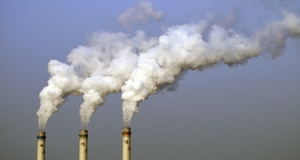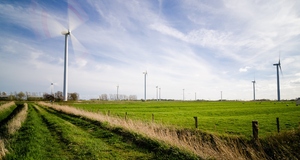Featured Article:Commercialization of Biochar and the Benefits for Climate Change and Agriculture
By
2016, Vol. 8 No. 12 | pg. 3/3 | « ConclusionThe goal of this paper was to develop an understanding of the properties and benefits of biochar, how these properties and benefits relate to agriculture and the carbon cycle, and whether the carbon sequestration potential for biochar is economically viable. By exploring the chemical, physical, and biological properties of biochar and how they affect soil, this paper determined that biochar has largely positive effects on soil ecosystems as well as agriculture in general. However, there are issues and complexities in both the gathering of biochar feedstocks and within the pyrolysis operations themselves that can complicate biochar production. As a result, the cost benefit analysis must consider a wide range of variables that are specific to feedstocks, local or regional capacity, collection methods, pyrolysis speed and temperature, and market conditions. It is sadly ironic that the bounds of sustainability that biochar initiatives aim to adhere to, such as internalizing all costs, are also preventing those initiatives from providing the sustainable solutions and products that are desperately needed. Essentially, the successful commercialization of biochar requires that the energy and agricultural sectors internalize costs that have traditionally been externalized onto society and the environment. Part of the reason why biochar is not yet economically feasible on a large scale is because of the attempt to respond to sustainability issues in a sustainable way. Biochar industrial commercialization is attempting to operationalize practices within the bounds of sustainability within a broader system where the bounds of sustainability are not fully recognized, respected, or even accepted. It is sadly ironic that the bounds of sustainability that biochar initiatives aim to adhere to, such as internalizing all costs, are also preventing those initiatives from providing the sustainable solutions and products that are desperately needed. Essentially, the successful commercialization of biochar requires that the energy and agricultural sectors internalize costs that have traditionally been externalized onto society and the environment. Small scale biochar initiatives, on the other hand, are more economically viable, especially in developing countries. However, there are barriers such as institutional capacity, lack of awareness, and a need for broad stakeholder involvement. These barriers can be overcome more easily than the sustainability challenge of large scale biochar initiatives. The success of small scale biochar projects might be a precursor for larger scale projects as they can demonstrate environmental benefits that are not yet economically valued in the contemporary marketplace.Despite the issues that biochar commercialization faces, the potential for biochar to provide solutions for soil loss, degraded soils, food security, and climate change are very exciting. Carbon markets will continue to expand and governments will hopefully enact progressive legislation that requires industry to internalize more of their costs. One of the main barriers to biochar entering mainstream markets is a lack of consumer awareness and education (International Biochar Initiative, 2015). Public education about carbon pricing, agricultural sustainability, negative externalities, and carbon sequestration is a necessary step for biochar to reach its full potential as a part of an overall solution to come of the major climatic and agricultural issues of the world today. ReferencesAnderson, P. (2009) Biomass Energy Foundation. CO and PM Emissions from TLUD Cookstoves. Presented at 2009 ETHOS Conference, 23-25 January 2009, Kirkland, WA, USA. Balzergue, C., Puech-Pages, V., Becard, G., & Rochange, S. F. (2011). The regulation of arbuscular mycorrhizal symbiosis by phosphate in pea involves early and systemic signalling events. Journal of Experimental Botany, 62(3), 1049-1060. Barlaz, M. (2006). Forest products decomposition in municipal solid waste landfills.Waste Management,26(4), 321-333. doi:10.1016/j.wasman.2005.11.002 Baum, E. & Weitner, S. (2006) Biochar Application on Soils and Celluosic Ethanol Production, Clean Air Task Force State Climate Network Brussaard, L., de Ruiter, P. C., & Brown, G. G. (2007). Soil biodiversity for agricultural sustainability.Agriculture Ecosystems & Environment,121(3), 233-244. doi:10.1016/j.agee.2006.12.013 Chan, K. Y., Van Zwieten, L., Meszaros, I., Downie, A., & Joseph, S. (2007). Agronomic values of greenwaste biochar as a soil amendment.Australian Journal of Soil Research,45(8), 629-634. doi:10.1071/SR07109 Freney, J. (1997). Emission of nitrous oxide from soils used for agriculture.Nutrient Cycling in Agroecosystems,49(1-3), 1-6. doi:10.1023/A:1009702832489 Galinato, S. P., Yoder, J. K., & Granatstein, D. (2011). The economic value of biochar in crop production and carbon sequestration.Energy Policy,39(10), 6344-6350. doi:10.1016/j.enpol.2011.07.035 Gaunt, J. & Lehmann, J. (2008) Energy Balance and emissions associated with biochar sequestration and pyrolysis bioenergy production. Environmental Science and Technology, 42, 4152-4158 Giampietro, M. & Ulgiati, S. (2005) Integrated assessment of large-scale biofuel production. Critical Reviews in Plant Science. 24, 365-384 Glaser, B., Lehmann, J., & Zech, W. (2002). Ameliorating physical and chemical properties of highly weathered soils in the tropics with charcoal - a review.Biology and Fertility of Soils,35(4), 219-230. doi:10.1007/s00374-002-0466-4 Glover, M. (2009). Taking biochar to market: Some essential concepts for commercial success. In J. Lehmann, & S. Joseph (Eds.),Biochar for environmental management(pp. 376). London: Earthscan. Graber, E. R., Harel, Y. M., Kolton, M., Cytryn, E., Silber, A., David, D. R., . . . Elad, Y. (2010). Biochar impact on development and productivity of pepper and tomato grown in fertigated soilless media.Plant and Soil,337(1-2), 481-496. doi:10.1007/s11104-010-0544-6 Grossman, J. M., O'Neill, B. E., Tsai, S. M., Liang, B., Neves, E., Lehmann, J., & Thies, J. E. (2010). Amazonian anthrosols support similar microbial communities that differ distinctly from those extant in adjacent, unmodified soils of the same mineralogy.Microbial Ecology,60(1), 192-205. doi:10.1007/s00248-010-9689-3 Ike, I (2015). Recycling Timber: Wasting Away. UK Building. Retrieved from: http://www.building.co.uk/recycling-timber-wasting-away/5078393.article IPCC. (2007) Climate Change 2007: Synthesis Report. Contribution of Working Groups I, II and III to the Fourth Assessment Report of the Intergovernmental Panel on Climate Change [Core Writing Team, Pachauri, R.K and Reisinger, A. (eds.)]. IPCC, Geneva, Switzerland, 104 pp. Jenkinson, D. S. & Ayabana, A. (1977) Decomposition of carbon 14 labelled plant material under tropical conditions, Soil Science Society of America Journal. 41, 912-915 Jirka, S., Tomlinson, T. (2013) State of the Biochar Industry: A Survey of Commercial Activity in the Biochar Field. International Biochar Initiative. Retrieved from http://www.biochar-international.org/sites/default/files/State_of_the_Biochar_Industry_2013.pdf Joseph, S. D., Camps-Arbestain, M., Lin, Y., Munroe, P., Chia, C. H., Hook, J., . . . Amonette, J. E. (2010). An investigation into the reactions of biochar in soil.Australian Journal of Soil Research,48(6-7), 501-515. doi:10.1071/SR10009 Kabir, Z. (2005). Tillage or no-tillage: Impact on mycorrhizae. Canadian Journal of Plant Science, 85(1), 23-29. Kasozi, G. N., Zimmerman, A. R., Nkedi-Kizza, P., & Gao, B. (2010). Catechol and humic acid sorption onto a range of laboratory-produced black carbons (biochars).Environmental Science & Technology,44(16), 6189-6195. doi:10.1021/es1014423 Kelliher, F. M., Li, Z., & Nobel, A. D. L. (2014). Nitrogen application rate and nitrous oxide flux from a pastoral soil.New Zealand Journal of Agricultural Research,57(4), 370-376. doi:10.1080/00288233.2014.927772 Kim, J., Sparovek, G., Longo, R. M., De Melo, W. J., & Crowley, D. (2007). Bacterial diversity of terra preta and pristine forest soil from the western amazon.Soil Biology & Biochemistry,39(2), 684-690. doi:10.1016/j.soilbio.2006.08.010 Kroeze, C., & Seitzinger, S. (1998). Nitrogen inputs to rivers, estuaries and continental shelves and related nitrous oxide emissions in 1990 and 2050: A global model.Nutrient Cycling in Agroecosystems,52(2-3), 195-212. doi:10.1023/A:1009780608708 Laird, D. A., Fleming, P., Davis, D. D., Horton, R., Wang, B., & Karlen, D. L. (2010). Impact of biochar amendments on the quality of a typical midwestern agricultural soil.Geoderma,158(3-4), 443-449. doi:10.1016/j.geoderma.2010.05.013 Lal, R. (2004). Soil carbon sequestration impacts on global climate change and food security.Science,304(5677), 1623-1627. doi:10.1126/science.1097396 Lal, R. (2008) Carbon Sequestration. Philosophical Transaction of the Royal Society B. 447, 815-830 Lehman, J., da Silva Jr., J.P., Steiner, C., Nehls, T., Zech, W., & Glaser, B. (2003) Nutrient availability and leaching in archaeological Antrhosol and a Ferralsol of the Central Amazon basin: Fertilizer, manure and charcoal amendments, Plant and Soil, 249, 343-357 Lehmann, J., & Joseph, S. (2009). Biochar systems. In J. Lehmann, & S. Joseph (Eds.),Biochar for environmental management(pp. 147). London: Earthscan. Lehmann, J., Rillig, M. C., Thies, J., Masiello, C. A., Hockaday, W. C., & Crowley, D. (2011). Biochar effects on soil biota - A review.Soil Biology & Biochemistry,43(9), 1812-1836. doi:10.1016/j.soilbio.2011.04.022 Major, J., Lehmann, J., Rondon, M., & Goodale, C. (2010). Fate of soil-applied black carbon: Downward migration, leaching and soil respiration.Global Change Biology,16(4), 1366-1379. doi:10.1111/j.1365-2486.2009.02044.x Makoto, K., Tamai, Y., Kim, Y. S., & Koike, T. (2010). Buried charcoal layer and ectomycorrhizae cooperatively promote the growth of larix gmelinii seedlings.Plant and Soil,327(1-2), 143-152. doi:10.1007/s11104-009-0040-z McCarl, B. A., Peacocke, C., Chrisman, R., Kung, C., & Sands, R. D. (2009). Economics of biochar production utilitization and greenhouse gas offsets. In J. Lehmann, & S. Joseph (Eds.),Biochar for environmental management(pp. 341). London: Earthscan. Nguyen, B. T., & Lehmann, J. (2009). Black carbon decomposition under varying water regimes.Organic Geochemistry,40(8), 846-853. doi:10.1016/j.orggeochem.2009.05.004 Nguyen, B. T., Lehmann, J., Hockaday, W. C., Joseph, S., & Masiello, C. A. (2010). Temperature sensitivity of black carbon decomposition and oxidation.Environmental Science & Technology,44(9), 3324-3331. doi:10.1021/es903016y Nishio, M. (1996) Microbial Fertilizers in Japan. National Institute of Agro-Environmental Sciences. Food and Fertilizer Technology Center for the Asian and Pacific Region. Retrieved from: http://www.agnet.org/library.php?func=view&id=20110801133429 No Author (2016) Biochar in Emerging and Developing Countries. Retrieved from http://www.biochar-international.org/developingeconomies Prentice, I.C., Farquhar, G.D., Fasham, M. K. R., Goudlen, M. L., Heimann, M., Jaramillo, V.J., Kheshgi, H. S., Led Quere, C., Scholes, R. J., & Wallace, D. W. R. (2001) The carbon cycle and atmospheric carbon dioxide, in J. T. Houghton, Y Ding, D. J. Griggs, M. Noguer, P. van der Linden, X. Dai, K. Maskell & C.A. Johnson (eds) Climate Change 2001: The Scientific Basis. Contribution of Working Group I to the Third Assessment Report of the Intergovernmental Panel on Climate Change, Cambridge University Press, UK O'Neill, B., Grossman, J., Tsai, M. T., Gomes, J. E., Lehmann, J., Peterson, J., . . . Thies, J. E. (2009). Bacterial community composition in brazilian anthrosols and adjacent soils characterized using culturing and molecular identification.Microbial Ecology,58(1), 23-35. doi:10.1007/s00248-009-9515-y Pretty, J., Brett, C., Gee, D., Hine, R., Mason, C., Morison, J., van der Bijl, G. (2000). An assessment of the total external costs of UK agriculture.Agricultural Systems,65(2), 113-136. doi:10.1016/S0308-521X(00)00031-7 Ramanathan, V., M. Agrawal, H. Akimoto, M. Aufhammer, S. Devotta, L. Emberson, S.I. Hasnain, M. Iyngararasan, A. Jayaraman, M. Lawrance, T. Nakajima, T. Oki, H. Rodhe, M. Ruchirawat, S.K. Tan, J. Vincent, J.Y. Wang, D. Yang, Y.H. Zhang, H. Autrup, L. Barregard, P. Bonasoni, M. Brauer, B. Brunekreef, G. Carmichael, C.E. Chung, J. Dahe, Y. Feng, S. Fuzzi, T. Gordon, A.K. Gosain, N. Htun, J. Kim, S. Mourato, L. Naeher, P. Navasumrit, B. Ostro, T. Panwar, M.R. Rahman, M.V. Ramana, M. Rupakheti, D. Settachan, A. K. Singh, G. St. Helen, P. V. Tan, P.H. Viet, J. Yinlong, S.C. Yoon, W.-C. Chang, X. Wang, J. Zelikoff and A. Zhu (2008), Atmospheric Brown Clouds: Regional Assessment Report with Focus on Asia. United Nations Environment Programme, Nairobi, Kenya. Retrieved from http://www.unep.org/pdf/ABCSummaryFinal.pdf Ringer, M., Putsche, V. & Scahill, J. (2006). Large-Scale Pyrolysis Oil Production: A technology Assessment and Economic Analysis. National Renewable Energy Laboratory. www.nrel.gov/docs/fy07osti/37779.pdf Scholz, S. M., Sembres, T., Roberts, K., Whitman, T., Wilson, K., & Lehmann, J. (2014) Biochar Systems for Smallholders in Developing Countries: Leveraging Current Knowledge and Exploring Future Potential for Climate-Smart Agriculture. World Bank Studies. Washington, DC: World Bank. doi:10.1596/978-0-8213-9525-7. License: Creative Commons Attribution CC BY 3.0 IGO Steiner, C., Teixeira, W., Lehmann, J., & Zech, W. (2004). In Glaser B. W.,WI (Ed.),Microbial response to charcoal amendments of highly weathered soils and amazonian dark earths in central amazonia - preliminary results Tisdall, J. M., & Oades, J. M. (2012). Landmark papers: No. 1. organic matter and water-stable aggregates in soils.European Journal of Soil Science,63(1), 8-21. Topoliantz, S., & Ponge, J. (2003). Burrowing activity of the geophagous earthworm pontoscolex corethrurus (oligochaeta : Glossoscolecidae) in the presence of charcoal.Applied Soil Ecology,23(3), 267-271. doi:10.1016/S0929-1393(03)00063-5 U.S. Department of Agriculture, Economic Research Service. 2011.Data sets: ARMS Farm Financial and Crop Production Practices Woolf, D., Amonette, J. E., Street-Perrott, F. A., Lehmann, J., & Joseph, S. (2010). Sustainable biochar to mitigate global climate change.Nature Communications,1, 56. doi:10.1038/ncomms1053 Wright, M. M., Brown, R. C. & Boateng, A. A. (2008) Distributed processing of biomass to bio-oil for subsequent production of Fischer-Tropsch liquids. Biofuels, Bioprocessing, and Bioregining. (2), 229-238 World Energy Outlook (2013) Energy Access Database. Retrieved from http://www.worldenergyoutlook.org/resources/energydevelopment/energyaccessdatabase/#d.en.8609 Yesuf, M., & Bluffstone, R. A. (2009). Poverty, risk aversion, and path dependence in low-income countries: Experimental evidence from ethiopia.American Journal of Agricultural Economics,91(4), 1022-1037. doi:10.1111/j.1467-8276.2009.01307.x Suggested Reading from Inquiries Journal
Inquiries Journal provides undergraduate and graduate students around the world a platform for the wide dissemination of academic work over a range of core disciplines. Representing the work of students from hundreds of institutions around the globe, Inquiries Journal's large database of academic articles is completely free. Learn more | Blog | Submit Latest in Environmental Studies |


















